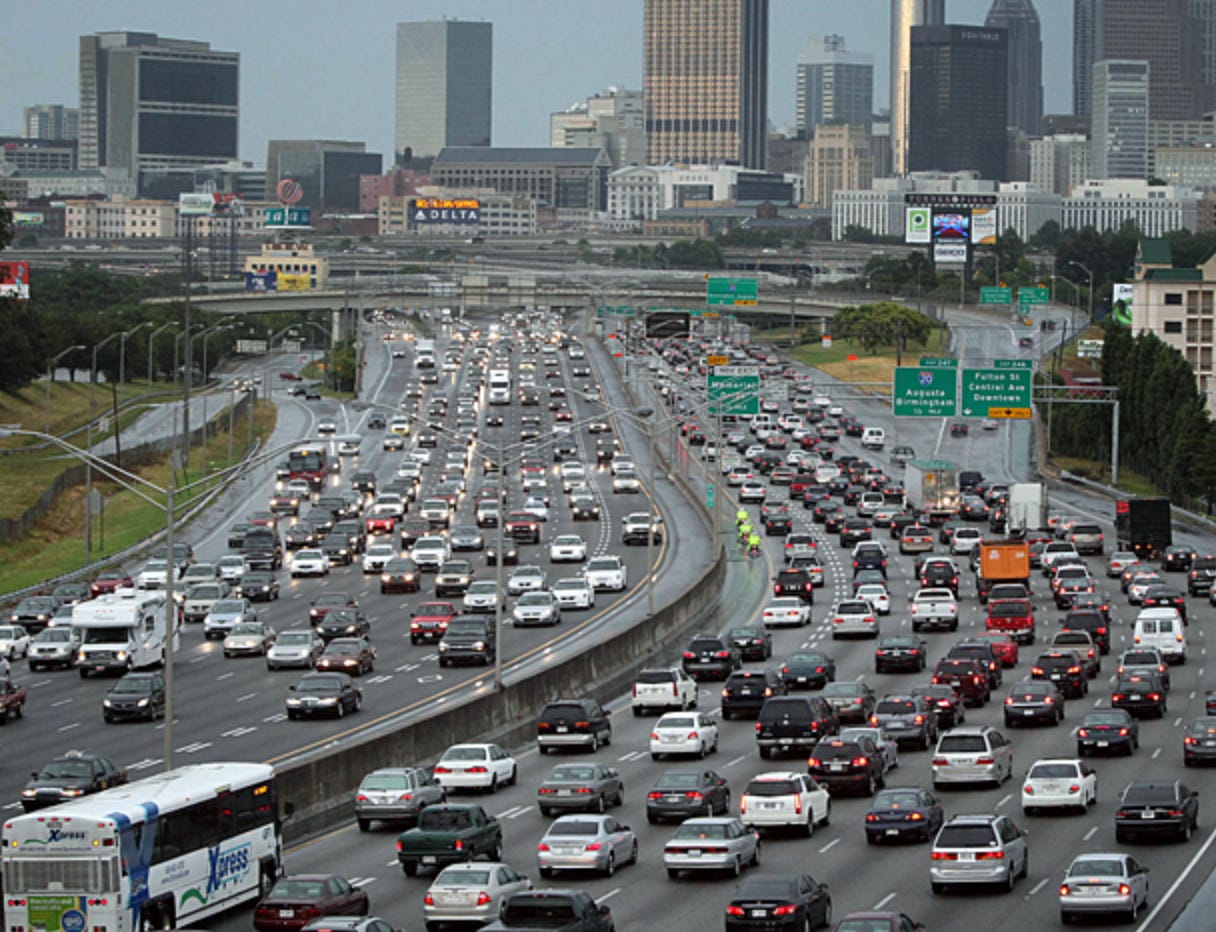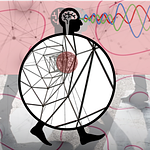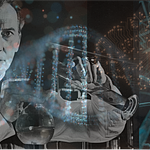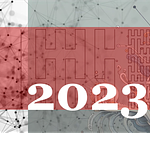Hello Interactors,
It’s easy to be seduced by the rise of the electric vehicle. I admit I’m a fan. But amidst the glimmer and sheen ugly truths go unseen. Most people pat themselves on the back for switching to an EV, and they should. But don’t pat too hard, there are some evil goblins lurking in those battery cells.
As interactors, you’re special individuals self-selected to be a part of an evolutionary journey. You’re also members of an attentive community so I welcome your participation.
Please leave your comments below or email me directly.
Now let’s go…
BLUE FAIRY DUST
It was 91℉ degrees (32℃), the asphalt 140℉ (60℃), and body temperatures were hitting 104℉ (40℃). The wind was blowing toxic hot smoke in their face. As if a grueling three weeklong Tour de France isn’t hard enough, riders had to contend with record heat and a nearby forest fire this week. The fire had been blazing for two weeks in a southwestern region of France. It had destroyed an area the size of 35 football fields and displaced 34,000 people. And like football fields, these forests are man-made.
These pine plantations, nearly one million hectares in all, the largest on the continent, are used to make paper, lumber, and other wood products and chemical biproducts. But they are also carbon stores. Stores so big that when they’re ignited, they become what experts call a ‘carbon bomb’. Because these trees are the same variety, fires spread faster. This makes them not just carbon bombs, but carbon carpet bombs.
Carbon stored in these trees are also used to make a liquid bomb, biodiesel. The production of biofuels in Europe, of which Germany and France are the biggest producers, is more commonly derived from used cooking oil and animal fats than plant material. France was already at capacity for growing plants for biofuels. The EU limits the percentage of available land to grow biofuels to protect land for food production and preserve natural habitats. Besides, most believe electric vehicles will be the most and practical way to reduce greenhouse gas emissions while displacing internal combustion engines. Biofuel is likely to make contributions to renewable energy, but it will be small relative to batteries. Of course, batteries have their own issues. And they’re not just environmental.
One of the necessary ingredients in lithium-ion batteries that power our devices and cars is cobalt. Cobalt takes its name from Germanic fairytales. A kobald, also a goblin or hobgoblin, are little mythical fairies or sprites. German miners believed they lived in the earth and formed a blue streak when they flew away. Others wore blue striped shirts and some a blue hat. These were called blue caps. When German miners came across blue minerals, they would call them goblin ore or kobald. Today we call it cobalt.
This metal is mostly produced through the process of copper and nickel mining. The largest quantities in the world are found in central Africa on the border of Zambia and the Democratic Republic of Congo (DRC) in a string of copper mines called the Copperbelt. An estimated 50-70% of the world’s cobalt comes from the DRC. Over the last ten years global demand has tripled and is expected to double again in the next decade. It’s currently the safest, best performing, and efficient ingredient for powering electric vehicles (EV). But extracting this metal is no fairytale.
There are two ways to extract cobalt from the earth’s crust. One is through industrial mining and the other by hand. Artisanal or Small-scale Mining accounts for 20-30% of total DRC cobalt extractions. Cobalt is so close to the earth’s surface it can be easily discovered. In 2014, one man was said to have discovered cobalt digging a hole for his water cistern. Once discovered, it’s not long before others are digging for this blue gold.
But handling this mineral is dangerous. And its high market value and availability can lead to human exploitation. In 2015, Amnesty International and Afrewatch conducted interviews with artisanal miners in southern DRC. What they found should give anyone pause reading this on a device with a lithium-ion battery or is a proud of their ‘sustainable’ EV. One woman talked of dragging 110-pound bags (50kg) of cobalt ore up rickety stairs of makeshift mines 32 feet (10m) deep or more – all prone to collapse. Between 2014 and 2015 the UN reported 80 artisanal mining fatalities in the former province of Katanga. They wore no helmets, gloves, or masks – no protective equipment at all. The woman said,
“We all have problems with our lungs and pain all over our bodies.”

Paul, aged 14, said in 2015 that he started working in the mines at age 12. He said he’d “spend 24 hours down in the tunnels. I arrived in the morning and would leave the following morning.” Some children reported working 12-hour days. If kids did go to school, many would work before and after school and then 12-hours on Saturday and Sunday. One 15-year-old, Dany, said “There is lots of dust, it is very easy to catch colds, and we hurt all over.” For some, that pain comes from being beaten.
Children reported being beaten, or witnessing beatings, by mining company security guards accusing kids of trespassing on their mining territory. They would also demand payment. Kids made to collect, sort, wash, crush, and haul cobalt ore had no way to weigh their bags. Traders would pay them whatever they wished, if at all. These kids said they usually earn $1000 or $2000 Congolese Francs or $1-$2 U.S. Dollars a day.
A 2018 study revealed high concentrations of cobalt in the blood and urine of child miners compared to area kids who were not involved in mining. They also found exposure-related DNA damage which makes them more prone to cancer. Children the world over are more prone to environmental pollutant exposure due to physiological characteristics, like high gastrointestinal absorption. Playing in toxic dirt and then bringing their hands to their mouth could make them sick or kill them. Children’s lung molecules are also uniquely susceptible to asthma from air pollution.
CORPORATE VICTIM BLAMING
This is not a good look for the auto industry who is desperately trying to cast EVs as sustainable. It’s also not good for their “Environment, Social, and Corporate Governance” (ESG) ratings or any company in their supply chain. The same could be said for electric grid energy storage companies using lithium-ion batteries. So, the energy extraction industry has taken a two-pronged approach toward what they claim to be a more ethical and reputable path toward a renewable energy transition.
The first approach comes on the advice of the World Bank. The World Bank was formed in 1944 to bring economic order to the West after WWII. The United States invited Western delegations and Japan to a luxury hotel in the woods of New Hampshire to hash out a scheme. The group wanted a way to establish global monetary order among friends while also providing the United States global access to its free trade ambitions. Their stated and current goal is to make loans to struggling countries, like the DRC, in hopes of reducing poverty. However, they’ve been criticized for exploiting and damaging the natural and human resources of these countries and their local communities. They’re accused of contributing to destabilizing their political order and perpetuating income disparity between the global North and the global South.
The World Bank recommends the extraction industry ‘formalize’ these artisanal miners. They claim bad actors are involved in trading corporate dollars for cobalt mined by artisanal miners. They would rather see energy extraction companies themselves engage with artisanal and small-scale miners. This puts these corporations on the hook for upholding the ethical and moral ESG values their shareholders increasingly demand of them.
This leads to the second prong of the two-pronged approach. It’s what some researchers call “corporate outsourcing of responsibility”. Knowing they’ll inevitably face legal risk for directly funding cancer inflicted kids peeing cobalt, they are shifting cobalt extraction risks away from themselves onto the men, women, and children they’re enabling.
These two shifts by extraction companies have indeed resulted in opportunities for safer mining conditions. But researchers visiting ‘model mines’ see lax enforcement of protective equipment and practice. They write,
“In mining shafts where basic safety regulations are rarely enforced, the sight of gloves, uniforms, hard-hats, safety glasses or steel toed boots is a welcome, but largely symbolic improvement.” They observed “some workers not wearing the equipment properly or failing to wear it at all.”

As these companies clear the land and provide access to safer mining conditions it attracts more informal artisanal miners to the area. This pits ‘legal’ against ‘illegal’ miners living and working in the same community. But only one has legal protection. To enforce legal extraction, companies’ hire security guards, or fund local authorities, which can result in more beatings, exploitation, and dispossession. Meanwhile, corporations are legally exonerated. They outsourced their responsibility.
The presence of both artisanal and industrial miners makes it difficult to know the true source of cobalt in a battery. Researchers heard from one local NGO,
“model mine is just a name (…) At the end of the day, all minerals are bought [by the companies], irrespective of their origin.”
This means only a subset of the overall artisanal mining population receive access to corporate benefits – including legal protection.
Filipe Calvão, a socio-cultural anthropologist specializing in culture and capital in postcolonial Africa, and his colleagues, conclude, “Though in response to increased corporate scrutiny and as part of responsible mining initiatives, these formalization strategies in the DRC risk exacerbating the vulnerability and insecurity of these populations in a context of outsourced corporate responsibility.”
In a 2019 World Economic Forum report, “A Vision for a Sustainable Battery Value Chain in 2030”, they say “between 10 and 12 million [DRC] people depend directly or indirectly on mining and 80% of exports are mining products.” While they acknowledge most cobalt comes from large industrial mines, they also admit “an estimated 40.5 million people globally were directly engaged in artisanal mining, compared to 7 million in industrial mining.” They warn these miner’s internationally recognized human rights are being violated. Including kids. Of the 250,000 people estimated to be working in dangerous mining conditions, 35,000 are children. But an estimated one million children are affected one way or another by the DRC’s mining industry. The World Economic Forum calls for action at every stage of the value chain, but also at every level of government
.
There’s an accepted view among human rights and environmental scholars and activists that corporations, and their national governments, intent on formalizing artisanal mining must move away from their legalist attempts to outsource their ethical and moral responsibility. They advocate for a bottoms-up approach that focuses on the interaction of people and place. They call for attention on the local workforce, their workplace, and the myriad of practical arrangements among and between workers, traders, and corporate and governmental stakeholders.
As early as 2010 the U.S. Congress appeared to be listening. That’s when they passed the Dodd-Frank Act which issues “rules requiring certain companies to disclose their use of conflict minerals if those minerals are ‘necessary to the functionality or production of a product’ manufactured by those companies.” It came about due to “concerns that the exploitation and trade of conflict minerals by armed groups is helping to finance conflict in the DRC region and is contributing to an emergency humanitarian crisis.” It identifies these minerals: tantalum, tin, gold, or tungsten. But there is not a single mention of cobalt. The supply chain of copper and uranium also remain largely unregulated. Where you find copper mines, you often find cobalt mines.
It's not just EVs in the crosshairs. Batteries are also needed to buffer and store renewable energy generated from wind and solar. The World Economic Forum estimated in 2017 that 850 million people worldwide lack access to electricity and could benefit from off-grid solar electricity augmented with battery storage. A majority, 67%, of these nearly 1 billion people live in Africa. The cobalt these people are mining in the DRC could better their own lives and the lives of millions of other Africans. But not until their human rights are respected by far flung corporations.
DOPAMINE WEANING
Both off-grid energy storage and electric vehicles are core components of the Paris Agreement. Transportation and the power sector account for 40% of all GHG emissions. We’re talking about a lot of EVs. The World Economic Forum estimates over 250 million electric passenger cars will be on roads by 2030. They also believe the only way to hit those Paris Agreement targets is to move battery production to a circular economy model. Raw mineral extraction could be greatly reduced by creating markets for component recycling and reuse throughout the battery value chain. They believe it will save money too. They estimate, with the right circular economic levers, vehicle manufacturers legally required to adhere to end-of-life management of EV batteries could save an estimated $7 billion a year.
This all sounds promising, and I fully support moves to circular economies. I also admit EVs can help reduce greenhouse gas emissions and I even think they’re fun to drive! But they’re only ‘green’ when their charged with clean, ethical electricity; when their parts are made and shipped with clean electricity; assembled with clean electricity; and shipped to dealers with clean electric ships, trains, and trucks. Even then, they will still clog our roads and tire particulates will pollute the water. Meanwhile, cobalt extraction will continue to be done by kids in the DRC so long as money can be found by digging a hole in the ground in search of blue dust. Meanwhile, corporations legally shame and blame them, and their parents, for putting cobalt in their pee. There’s no getting around the ugly fact that any consumer participating in this modern technological society are part of the problem. Including me. I’m reminded of a U.S. Marine’s response to the question, “Did you ever kill anyone?” His response: “If I did, you paid me for it.”
Here's an idea, what if we also reduce the reliance on, and cure the addiction to, cars? Yes, we need batteries and renewable energy to wean us off fossil fuels – and it must be done ethically – but what will it take to wean over-consumers off over-consumption?
We humans have but one reward system – dopamine. It’s a little chemical reaction in our brain that triggers us, among other things, to seek food when we’re hungry. Without it, we’d starve to death. These reactions reinforce the behavior that produce them. The greater the reward the more dopamine is needed for our brains to be satisfied. Eat a donut and you get a dopamine spike. And then a crash as it falls to a baseline. But that baseline has inched higher than before the brain was introduced to the pleasure of a donut. So, not only does the craving increase but it may take two donuts to achieve the same reward next time.
This is how addiction works. Amphetamines and cocaine are dopamine super boosters that progressively raise the baseline. Soon addicts are free basing. Buying things is also a dopamine booster, albeit much milder. Consuming goods, or feeding on social media, can also be addictive. The more we consume the more prone we are to desire it more. It’s the hedonic treadmill on which capitalism relies. Unchecked, it leads to disaster. Just like drug and alcohol addiction.
Exercise can release dopamine too, but not for everyone. For some, it’s more pleasurable to sit and store energy, than to exercise and burn it. Even if they try to workout, the brain won’t be satisfied until the more pleasurable action is taken. In this case, inaction. Those who enjoy getting exercise, the opposite is true. Going for a walk releases more dopamine than sitting on the couch. But those habits get reinforced as well. Sometimes it takes more exercise to get the same dopamine high – even if it hurts. No pain, no gain. To make the pain pleasurable, one must tell the brain that the pain is not necessarily inane. Staying fit is fun, so get off your butt and walk, bike, or run.
For those athletes in the Tour de France to achieve their super-human feats, they have conditioned their brain to believe climbing 15% mountain grades in sweltering heat, on melting asphalt roads, with a fever is fun. It not only takes a special physical body to achieve this, but a disciplined mind. However, in the end, despite what the brain thinks, their bodies have limits.
So does our earth, no matter what our brains think. Our brains are as miraculous as they are mysterious. They can invent biofuels and batteries so they can then seek addictive and reinforcing pleasures. One of which is the pleasure of acceleration, power, and domination that comes with driving a car (especially an EV). But for most, getting stuck in traffic, going slow, driving a wimpy compact car does not release dopamine and so people crave the opposite. Another strange paradox: The more pleasure-seeking motorists there are the less satisfying driving is. Until everyone stuck in traffic starts telling themselves ‘this is fun’, motorist brains will not be releasing dopamine. Until walking, rolling, or riding is pleasurable, or we con our brains into believing it is, car owner’s brains will tell the hands to grab the car keys. Even if that dopamine hit only comes from flooring it on a freeway on-ramp on the way to a traffic jam or an accident…the ultimate dopamine crash.

Those addicted to cars may have to convince their brain that being inconvenienced by a walk and wait for a bus is a good thing. I, for one, take pleasure in reading and writing on the bus. And I feel more connected to my people and my place. Sure, I get a dopamine hit with sudden acceleration of my car, but it’s so infrequent my baseline keeps dropping. I get more pleasure telling my brain that my choice to walk or bike may save a life, reduce the odds of inducing childhood asthma, or even save the planet. Even if some believe those are all myths, my dopamine dealer doesn’t need to know that. It can believe anything. Like the blue dust of the earth that powers an EV comes from the exhaust of a blue-capped magical mining sprite.
References:
Cobalt mining and the corporate outsourcing of responsibility in the Democratic Republic of Congo. Filipe Calvao, Catherine Erica Alexina Mcdonald, Matthieu Bolay. The Extractive Industries and Society. 2021.
Sustainability of artisanal mining of cobalt in DR Congo. Célestin Banza Lubaba Nkulu, et al. Nature Sustainability | VOL 1 | SEPTEMBER 2018.
A Vision for a Sustainable Battery Value Chain in 2030. World Economic Forum. 2019.
















The EV Fairytale Turns to Dust